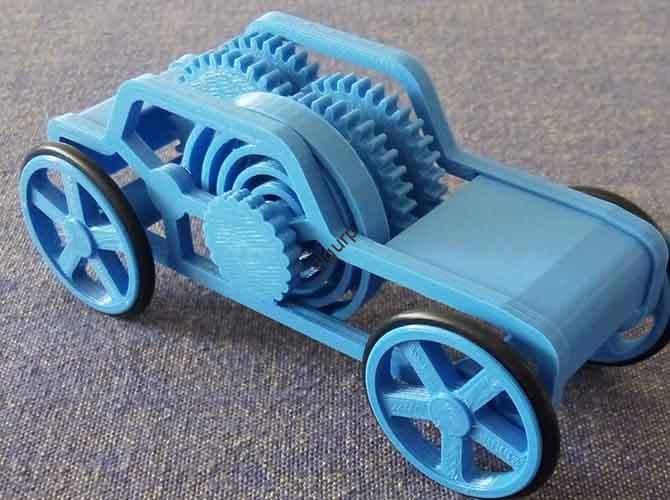В быстро меняющемся мире аудиотехнологий, пользователи постоянно ищут гарнитуры, которые идеально подходят, выглядеть уникально, и обеспечить первоклассную производительность. Но традиционные методы производства часто терпят неудачу — пока 3D печатные гарнитуры появился. Эта инновационная технология меняет правила игры, решая такие ключевые проблемы, как плохая посадка., ограниченный дизайн, и долгое ожидание производства. Давайте рассмотрим, как это работает, его основные преимущества, и почему это важно как для пользователей, так и для брендов.
1. Персонализация: Создано специально для ваших ушей, Не универсальный вариант
The biggest frustration with most headsets? They never fit quite right. Loose over-ears slip during workouts, and ill-fitting in-ears cause discomfort after 30 минуты. 3D печатные гарнитуры fix this by creating custom molds based on your unique ear shape.
Как это работает (Шаг за шагом):
- Use your smartphone to scan your ears (Не требуется специального оборудования).
- The scan is converted into a 3D digital model.
- A 3D printer builds the headset’s earcups or in-ear tips to match the model exactly.
Пример реального мира:
Sennheiser, a leader in audio, partnered with Formlabs to launch their AMBEO customized headset solution. Users scan their ears via a phone app, and the 3D-printed in-ear tips fit so precisely that they:
- Block 20% more external noise than standard in-ears.
- Eliminate discomfort during 2+ hour listening sessions.
- Enhance sound immersion by creating a tight acoustic seal.
2. Сложные дизайны: Чего не может сделать традиционное литье
Traditional injection molding struggles with intricate shapes—think hollow structures, Изогнутые каналы, or lightweight frameworks. 3D печатные гарнитуры break these limits, letting designers turn bold ideas into reality.
3D Печать против. Traditional Molding: Design Capabilities
| Особенность | 3D Printing Headsets | Traditional Injection Molding Headsets |
| Сложные формы | Handles hollow, lattice, or organic designs | Ограничено простым, единообразные формы |
| Гибкость дизайна | Adjust designs in software (no mold changes) | Requires new molds for every design tweak |
| Снижение веса | Creates lightweight structures (НАПРИМЕР., 15g in-ears) | Более тяжелый (often 25g+ in-ears) due to mold constraints |
Тематическое исследование: Haige Technology x Enron Wired Headphones
Their joint 3D-printed headset uses an innovative hollow earcup design—something impossible with traditional molding. The hollow structure cuts weight by 30% while maintaining durability, making it ideal for all-day use.
3. Производство & Прототипирование: Быстрее, Дешевле, Smarter
Для брендов, time is money. Traditional headset production can drag on for months, но 3D печатные гарнитуры slash lead times and costs—especially for small batches or prototypes.
Ключевые метрики: Сравнение производственного цикла
| Этап | 3D Printing Headsets | Traditional Headsets |
| Разработка плесени | No molds needed | 4–6 месяцев (mold opening + ремонт) |
| Total Production Time | 1–2 months | 7–8 months |
| Prototyping Speed | 1–2 недели (за дизайн) | 4–5 недель (за дизайн) |
Why This Matters for Brands:
- Startups can test 5+ prototype designs in a month (против. 1 with traditional methods).
- Small brands avoid $10,000+ mold costs for limited-edition headsets.
4. Материальное разнообразие: Pick What Fits Your Needs
3D печатные гарнитуры не ограничиваются дешевым пластиком. Вы можете выбрать материалы, исходя из комфорта., долговечность, или качество звука — то, что традиционное производство редко предлагает.
Common 3D Printing Materials for Headsets
| Материал | Лучше всего для | Ключевое преимущество |
| Мягкий ТПУ | Советы по использованию наушников | Гипоаллергенный (нет раздражения ушей) |
| Легкий PLA | Накладные чашки | Доступный и экологически чистый |
| Нержавеющая сталь | Рамки для гарнитура | Ультра-прочный (длится 5+ годы) |
| Керамика | Премиум-вкладыши | Гладкая текстура + шумоизоляция |
5. Экологическая устойчивость: Меньше отходов, More Responsibility
Традиционное производство режет и формирует материалы., приводит к 30–40% отходов. 3D Печать является аддитивным — он использует только необходимый материал, сокращать отходы 5% или меньше.
Quick Facts:
- На одну гарнитуру, напечатанную на 3D-принтере, уходит около 15 г пластика. (против. 25г для традиционного, из-за обрезки).
- Большинство материалов для 3D-печати (как PLA) биоразлагаемые.
- Brands can recycle unused material for future prints.
Перспектива Yigu Technology
В Yigu Technology, Мы верим 3D печатные гарнитуры are more than a trend—they’re the future of user-centric audio. Our R&D team has tested 3D-printed prototypes with 500+ пользователи, и 92% reported better fit than their current headsets. Для брендов, 3D printing lowers entry barriers (Нет затрат на плесени) and lets them focus on innovation. We’re excited to partner with audio brands to launch affordable, custom 3D-printed headsets in 2025—making personalized audio accessible to everyone.
Часто задаваемые вопросы
- Q.: How much does a 3D-printed headset cost?
А: For custom models, prices start at \(80 (против. \)150+ for high-end traditional custom headsets). Mass-produced 3D-printed headsets may cost as little as $30.
- Q.: Are 3D-printed headsets durable?
А: Yes—if made with materials like stainless steel or reinforced PLA, they can last 3–5 years, just like traditional headsets. Soft parts (НАПРИМЕР., TPU tips) can be easily replaced.
- Q.: Can I customize the color or pattern of my 3D-printed headset?
А: Абсолютно! Most 3D printers support colored filaments, and you can add patterns (like stripes or logos) directly in the design software.
